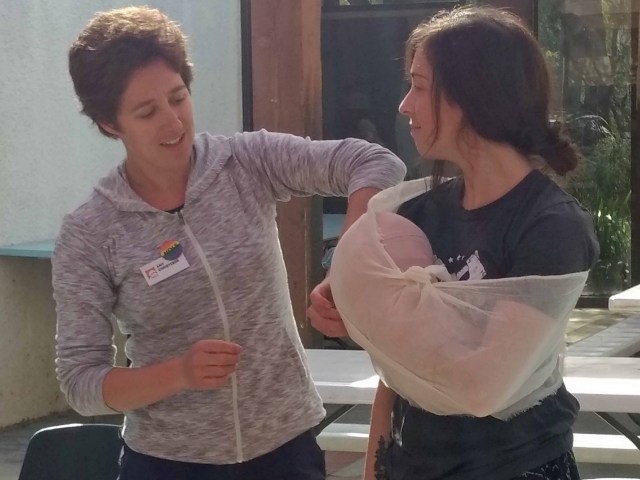When we dream about venturing outdoors, most of us envision bucolic strolls through wildflower-filled fields, sunny mornings ascending steep rock faces, being first to put skis to powder on virgin slopes, or watching the sunset from our lakeside camp. Days like these live on in our memory, drawing us again and again to new and familiar locales.
Not all adventures go as planned, and dreams can easily turn into nightmares. A wrong placement on a loose rock, the sun bearing down too hot for too long, a slip of the knife while making dinner can all turn carefree fun to something far more serious, and even life-threatening.
In an urban environment, a call to 9-1-1 or a quick trip to the hospital is the proper course of action. In a wilderness setting, this is not always an option. What would you do if something like this happened to you? Or someone in your group? A person you find along the trail? Would you know to count to five, and why? Saying A-B-C-D-E is not just about reciting the alphabet, and S-A-M-P-L-E and Head-to-Toe are about assessing your patient and moving forward.
This past weekend nearly thirty people of various ages and backgrounds gathered in Long Beach to participate in a Wilderness First Aid Course taught by instructors from NOLS and offered by REI. This was my fourth Wilderness First Aid course, and every time I’ve taken Wilderness First Aid I’ve been humbled by how little I know, how much I’ve forgotten since my last class, and how grateful I am for the quality instructors teaching these courses.
If you’ve spent more than four decades in the outdoors, the odds are you will have experienced your share of ‘bad days.’ I’ve had my quota of injuries, so to many of my friends. Knowing how to treat someone is important, and recognizing the onset of symptoms early can prevent things from getting worse.

Our instructors, Danny and Amy, taught our group with infectious enthusiasm. They covered the required topics in detail and answered all our questions. The class format switched between lectures, demonstrations, and scenarios, with more than half our time outside. Everyone had the opportunity to be a responder and a victim. Counterintuitively, you often learn as much being the ‘victim’ as you do being a responder.
Late Saturday afternoon, playing the part of an ‘injured’ rider, Amy applied fake blood to my face. When I went home that evening, and my wife saw me, her eyes got big and she said: “What happened to you?”

Another benefit of the weekend was getting the chance to hear some of the stories of other course participants. Dads taking the class because their kids are in Scouts, a young guide living in a tricked out van, a son wanting to learn first aid prior to going on a cross-country motorcycle trip with his dad. I used part of one of the lunch hours to have Danny assess my First Aid Kit. (There are a couple of things missing, something I’m in the process of correcting.)
Question for the reader: What’s in your first aid kit, why is it there, and do you know how to use it properly?

If you plan to recreate outside, and your adventures take you beyond cell-phone coverage, strongly consider taking a Wilderness First Aid Class. The cost of the class is nominal, especially considering what you receive. (Nobody is getting rich here.) It is time well spent, and it very well could save a life. (I’m strongly considering enrolling in a 10-day Wilderness First Responder class later in the year.)
For more information go to https://www.nols.edu/en/wilderness-medicine/courses/
(Just because you have taken a First Aid course in the past doesn’t mean you don’t need a refresher. Your memory isn’t as good as you think, and medical treatment recommendations change. Also, a NOLS certification is only good for two years.)
